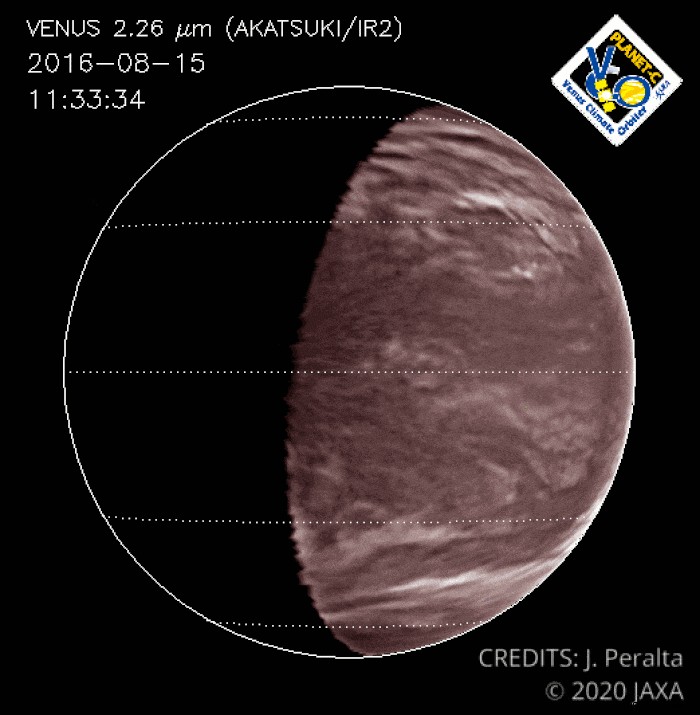A team of astronomers announces the discovery of a veritable "cloud wall" thousands of miles long moving around Venus. This is the first time that such a phenomenon has been observed in the Solar System.
Venus is a real atmospheric laboratory where everything goes to extremes. And for good reason:its very thick envelope, which consists almost entirely of carbon dioxide, rotates sixty times faster than the planet itself. As a result, winds of incredible power can form. The average surface temperature is also very hot, estimated at 471°C, and the atmospheric pressure is one hundred times higher to that of the Earth.
This particular atmosphere is conducive to the formation of huge cloudy waves. One of them has just been discovered by a team from the Japanese Space Agency (JAXA), based on data from the Akatsuki orbiter, recorded between 2016 and 2018.
This feature looked a lot like an atmospheric wave. However, the structure appears to have formed much deeper than any other atmospheric wave ever seen on Venus, taking root at between 47.5 and 56.5 km in the cloud layer responsible for the greenhouse effect that makes the surface of the planet so hot.
Furthermore, according to the data, this 7500 kilometer long "cloud wall seems to be racing east to west along the equator at more than 328 kilometers per hour . In doing so, it completes a full orbit of the planet in 4.9 Earth days . For comparison, the other clouds found at these altitudes are a little slower, with a rotation period of about 5.7 days.
Also according to the study, it also seems that this amazing structure developedseveral decades ago, as early as 1983 . However, astronomers still do not know what caused it.
“This atmospheric disturbance is a new weather phenomenon, unseen on other planets. For this reason, it is still difficult to provide a confident physical interpretation “, underlines Pedro Machado, of the Institute of Astrophysics and Space Sciences of Portugal. Other observations are underway to try to elucidate this new atmospheric mystery.

Despite these dantesque conditions, Venus is currently still the subject of study projects. The Indian space agency is considering sending a probe around Venus in order to study its surface and atmosphere in greater depth . The mission could see the light of day in 2023.
A few months ago, a team of researchers also proposed sending aircraft resembling flying rays into its atmosphere, with the aim of better apprehending its composition .
Finally, NASA offers a "return to the old", developing for a few years the Automaton Rover for Extreme Environments (AREE). It is a concept of an ultra-resistant and fully mechanical machine capable of exploring and studying different geological units on the surface of Venus.
And for good reason, no instrument sent on site has managed to survive for very long . The greatest feat goes to the Venera 13 probe, which succeeded in transmitting 22 photos and analyzing a Venusian rock in 1982. It finally resisted 127 minutes before giving up the ghost.